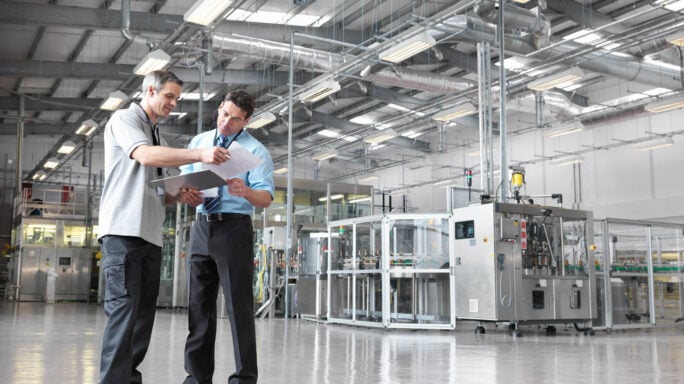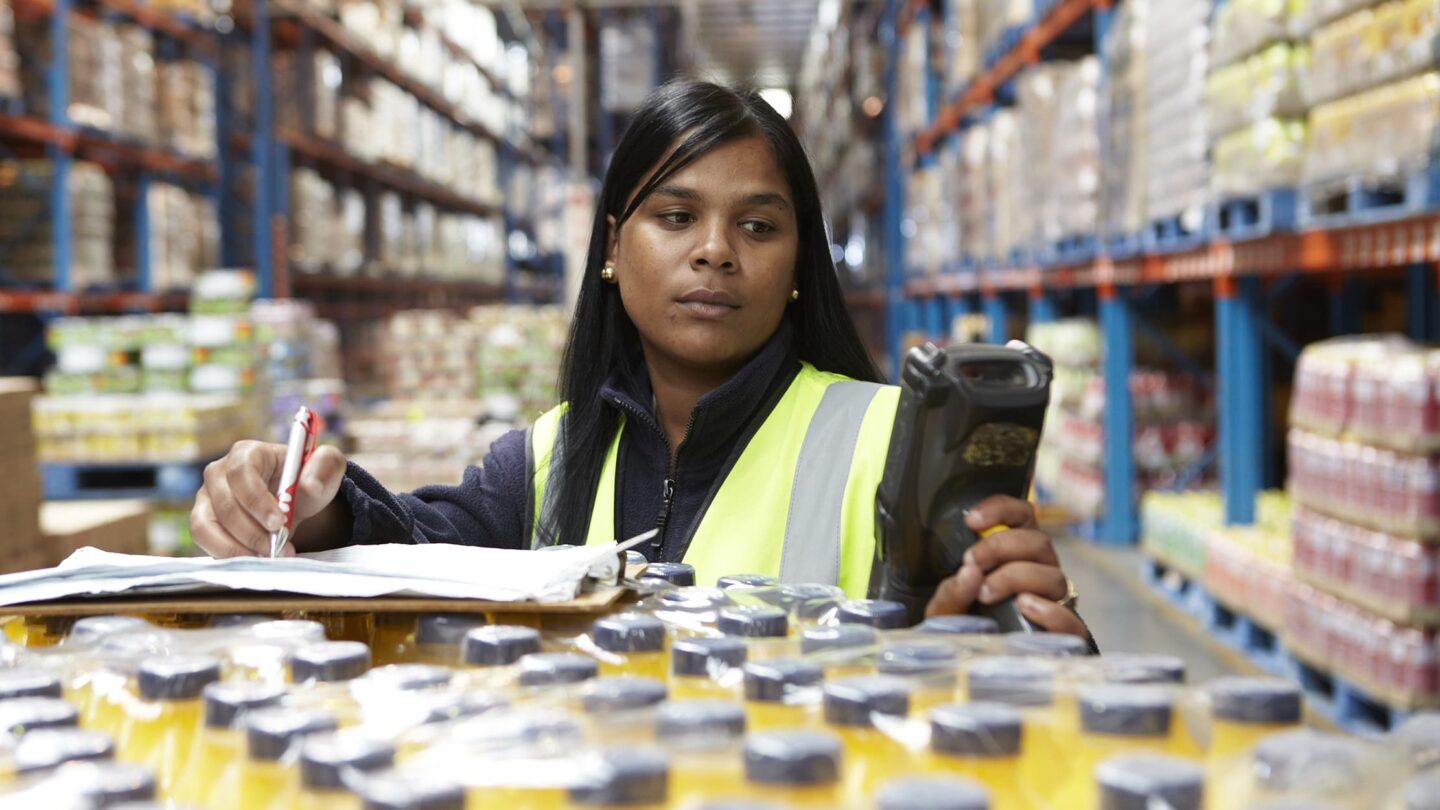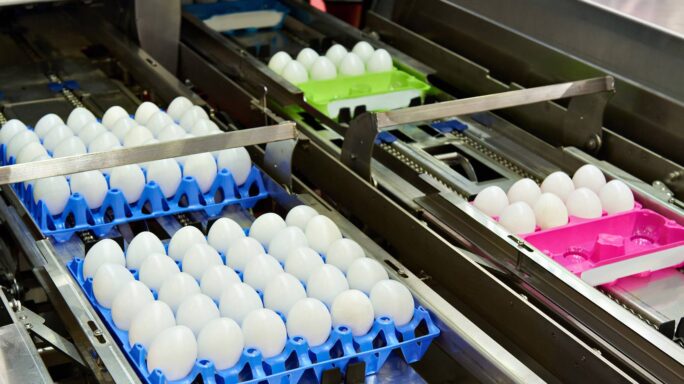Technology & Innovation
How to future-proof your supply strategy with supply chain ERP
In a post-pandemic world, food and beverage companies need a future-proof product management strategy — and it starts with supply chain ERP.

To future-proof food and beverage product management strategy, the right supply chain ERP is critical.
When pandemic pressures began ramping up in early 2020, supply chains seemed relatively safe. But as infections accelerated and governments reacted, suppliers across the globe were thrown into turmoil — historically stable supply chains broke down, and emerging connections dried up. As noted by Supply Chain Digital, 60 percent of businesses reported supply chain disruptions during the pandemic.
In the food and beverage industry, meanwhile, the combination of tough operating restrictions and reduced supply access created a perfect storm: Some markets saw an 80 percent reduction in food and beverage open rates, and while some businesses managed to reopen after supply chains stabilized, recent data shows that 10 percent of all U.S. restaurants have now closed permanently. In Canada, predictions suggest that up to 50 percent of independent restaurants may never reopen.
For those businesses still left standing when pandemic pressures ease, there’s a growing need for future-proof strategies that account for evolving supply chains, no matter their source, scope or duration.
Broken links: Analyzing the pandemic impact
It’s no exaggeration to say that the COVID-19 crisis precipitated one of the biggest shocks to global supply chains over the last few decades. The impact began in China and Southeast Asia, and as noted by the World Economic Forum, many businesses are “hugely reliant” on both production and supplies from these areas. When they locked down during the first wave of the pandemic, food and beverage providers dependent on these areas for products such as food packaging and safety items suddenly found familiar supply chains broken — and few options to replace them.
As the pandemic pressed on and many restaurants found themselves partially or entirely shuttered, supply chain concerns moved backward down the chain; demand dropped even as supplies began to rebound leaving middle-chain manufacturers, warehouse operations and logistics companies treading a difficult line between securing new supplies and running the risk of costly overstocking.
With many countries now making the move into “next normal” frameworks, food and beverage firms must find a way to reconcile the need for steady and stable supply with more agile inventory mandates.
The future of supply chain strategy
To future-proof supply chain strategy, three factors are critical for food and beverage businesses:
- Analysis
Single-supplier frameworks are no longer sufficient for stability — from potential pandemic repeats to global weather disasters, reliance on single-source solutions puts companies at risk. To help ensure robust and reliable supply chain futures, businesses must analyze current processes and identify areas for improvement, such as the addition of suppliers from disparate geographical areas to minimize the impact of world-scale events. Here, balance is critical: Overly diverse supply chains may end up costing companies too much in contractual obligations over time.
- Accessibility
As noted by EY, visibility and efficiency are now top priorities for post-pandemic supply chains. In practice, this equates to greater overall accessibility that allows businesses to track supplies from the moment they leave producer to the moment they arrive in warehouses or stores. Increased responsiveness is also critical; if supply chains begin to crack under pressure, businesses need a stress-tested plan for shifting to new supply streams.
- Automation
Food and beverage companies must also embrace the increased need for autonomous, digitized supply chain processes. According to the EY study, 64 percent of executives expect digitization to accelerate due to the pandemic, with a focus on end-to-end operational processes that minimize the need for manual processes to reduce error rates and improve overall productivity.
How Sage X3 ERP can help
Sage X3 supply chain ERP can help food and beverage firms both keep up with demand and stay ahead of the curve. Key features include:
- Purchase control
Better manage your suppliers at every stage of the supply chain process with seamless purchasing control. With streamlined supplier and product category management, supplier invoice entry and returns and multi-level signature management, your business can reduce purchase complexity and keep costs down.
- Inventory management
Real-time inventory management is critical in a mutli-modal supply chain future. With Sage X3 ERP, you gain complete visibility into inventory location, stock balances, quality control, replenishment requirements and import tracking to ensure you have the right products on-site when you need them most.
- Sales solutions
Sage X3 also integrates with sales team solutions to provide accurate pricing and discount data, quotes, contracts, invoices and inventory inquiries. As a result, your business is better prepared to navigate a supply chain future that relies on seamless interaction between business departments.
- Customer service integration
Having the right products at the right time isn’t enough to stay competitive in an inter-connected, always-on food and beverage marketplace. Informed by mobile devices and familiar cloud services, consumers now expect real-time response to inquires that leverage historic data, current pricing information and existing stock levels. Sage X3 delivers a complete understanding of customer activity to enhance overall satisfaction.
- Team collaboration
Silos can sidelines supply chain efficiency. If inventory, stock and transport information isn’t easily-accessible to teams across your organization, the results range from missed opportunities in new markets to unexpected supply chain disruptions. Integrated document workflows with Sage X3 ERP empower on-demand document creation and revision, and make it possible assign document access by user, role and project team levels with robust tag management.
Move beyond ERP with Sage X3
Take control of your entire business.
From supply chain to sales with Sage Business Cloud X3. Software for established businesses looking for greater efficiency, flexibility, and insight.

Forging a flexible future
The future of supply chains is flexible. Food and beverage businesses can no longer afford to rely on single-source suppliers — even those in typically reliable global marketplaces. Instead, companies need supply chain models that both meet current needs and help future-proof procurement and product management against the potential of new worldwide disruptions.
The shortest path to this more stable supply chain future? In-depth market analysis, increased accessibility and improved automation underpinned by cutting-edge, cloud-based supply chain ERP solutions.
See what Sage X3 can do for your food and beverage business. Request a demo today.







Ask the author a question or share your advice